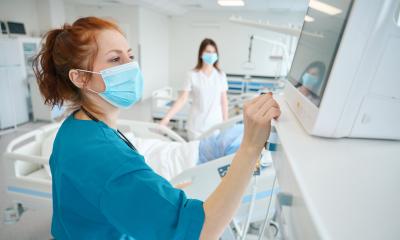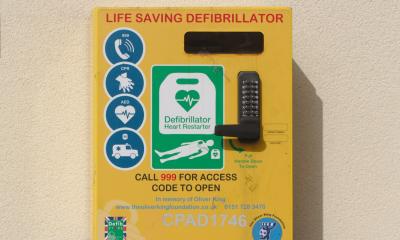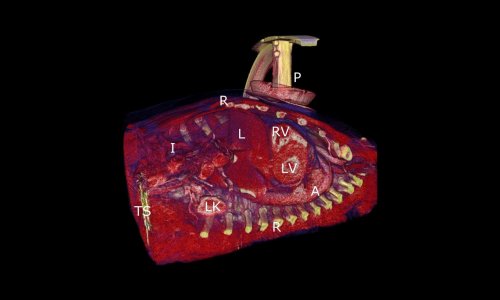Essential: Training staff for sudden disasters
The doors of the accident & emergency department fly open. An explosion occurred at a nuclear power station.
Severely injured workers, some screaming, some unconscious flood are rapidly arriving on trolleys pushed by paramedics; doctors and nurses rush in. About 50 accident victims need care. Who should be treated first – and where? Primary treatment is extended to other wards. ‘I think the power station reactor has also been affected,’ shouts a paramedic. The workers may be radioactively contaminated. ‘We can’t admit them to the hospital just like that!’ someone cries. Too late! Suddenly, everything eases up; everyone’s thinking the same thing: ‘Just as well this was just a training exercise!’
Norman Hecker, Head of the Project for Emergency Medicine at the German Institute for Disaster Medicine, is well versed in the effects of large scale incidents, pandemics and mass accidents, for he advises on and trains hospital staff for worst case scenarios, so that people can learn from the mistakes demonstrated in the above scenario. ‘Planning or no planning,’ he said, ‘training exercises or no training exercises can sometimes mean the difference between life and death. It is important to practice processes through regular training – that’s the only way to ensure that in a real emergency everything runs smoothly. Well-trained staff and optimised alarm action plans can often prevent an escalation of a crisis. One of the prerequisites for this is that the hospital continuously and critically checks its concepts for their suitability for practical use. Many hospital action plans are outdated and based around threats that no longer correspond with current reality. The terrorist attacks in the US on 11 September 2001 and those in Madrid and London showed the necessity of preparation for large-scale events through more efficient rescue strategies, and this applies to Europe as well.’ But, he adds, internal crises such as hospital fires or power cuts are also underestimated. As the sources of danger and the structures are very different from hospital to hospital individual risk analysis is needed to build up a functioning crisis management system.
‘The cost pressures that hospitals internationally face are well known. For this reason alone there should always be customised advice for each individual hospital, so that their effectiveness is not impaired, and also to guarantee first-class medical care under normal conditions. Disaster medicine training sessions in healthcare institutions should be held at least once a year, although it would be desirable to hold them more frequently. It goes without saying that not every possible scenario can be provided for with training exercises right down to the last detail, but we have repeatedly noted that participants in such simulations under real conditions develop very creative coping strategies.’
Efficient crisis management is characterised by three big Cs: Command, Communication and Coordination, he explained. This means that a senior management team should be appointed to take on the coordination of individual resources, and that organised reporting channels guarantee the transfer of information – if this is not done it can lead to situations where, for example, a contaminated patient contaminates all sensitive areas within a hospital because there has been insufficient preparation and structuring of his transfer through the building. In particular, the responsibilities and distribution of executive functions should be clarified before it is too late. ‘The incident command team must be determined,’ he advised. ‘They take over the strategic management and coordination of the crisis on site. Although, in Germany, they are supported by the super-ordinate danger defense organisations, such as the police and fire brigade, the hospital management can be, and is made, personally liable if a lack of prior planning is proved. Hospitals are ethically and legally obliged to ensure the best possible medical care for patients in the case of catastrophes despite limited resources.’
01.09.2008






